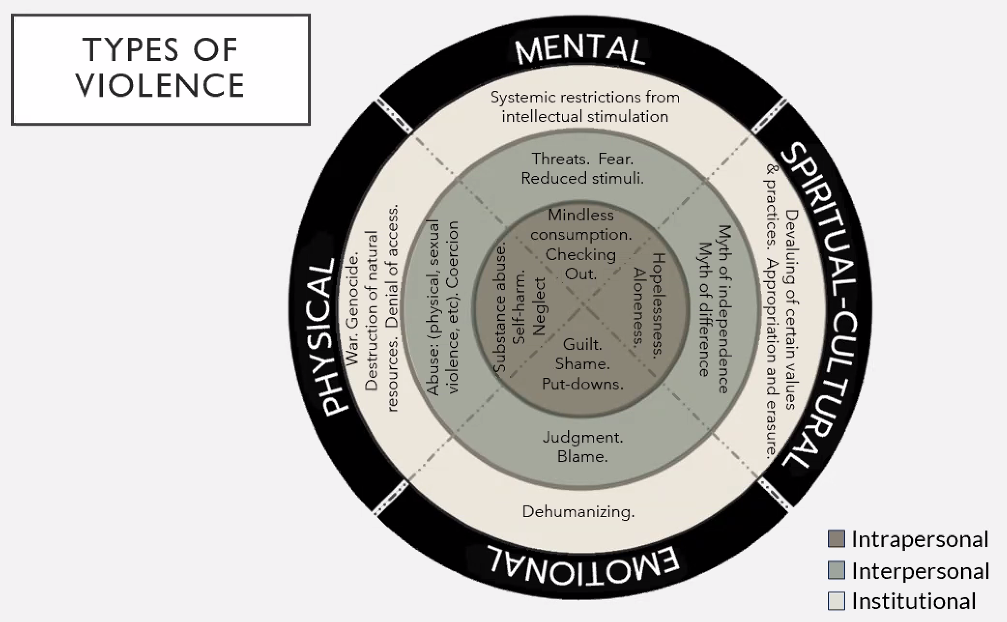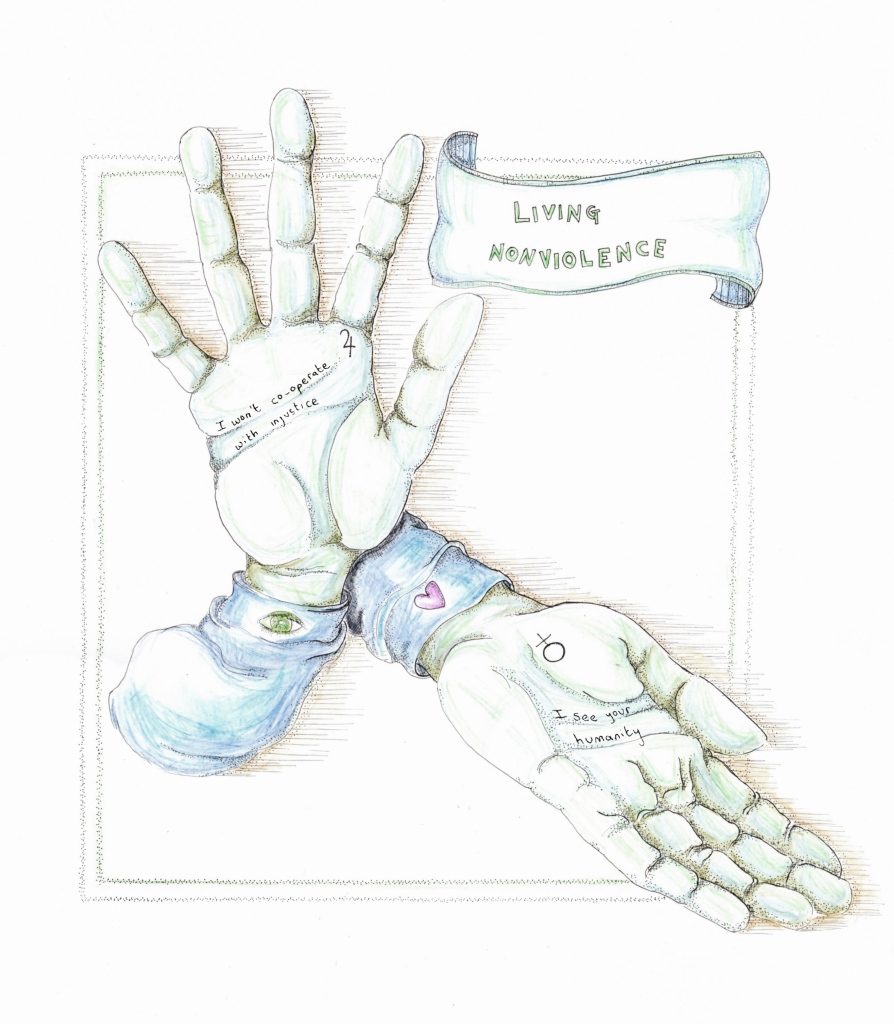Back in 2015, in a time of transition in my life, someone reflected back to me “you don’t seem to have much awareness of your feelings – i notice you tend to say you feel good or bad”. Even my own feelings were something i had learned to judge. This simple statement sent me into a deep journey of reflection and self connection that has radically changed how I experience life. Here is a little of what stands out from that journey…
For me, the shift starts with noticing and welcoming all parts of myself, and of others. I don’t always have the space or conditions or awareness to do it, and that too needs gentleness and compassion.
I also began to realise that we are not separate, that we are interconnected, and I want to live in a world where all needs matter. I care for other people’s needs and my own in the same breath, and want us to look for strategies that will work for all, so we can all be free and well and thrive.
A key part of my journey has been discovering Nonviolent Communication (NVC), developed by Marshall Rosenberg.
A core shift i found through NVC was to realise that all of our actions are attempts to meet human needs that we all share – that violence is a ‘tragic expression of unmet needs’. He shows how we experience pleasant feelings when our needs are met, and unpleasant feelings when our needs are unmet, and are socialised to focus on strategies to meet those needs. We will find any strategy we can to get our needs met, especially when we are in pain (emotionally or physically), or not feeling safe. Often these strategies are found when we are young and we continue them as patterns in our lives, long after they serve us. Often we don’t even know what motivates our actions, it’s just what we do, how we are.
Much of our communication and thought patterns centre on these strategies rather than the feelings and needs underneath, and this is the root of many of our conflicts and inner struggles. When we can connect with our feelings and needs and those of others, we come back into connection and from there are more able to find strategies that work for all. We can also reconnect with our choice and autonomy, to make requests, to say no, and to go to mourning when our needs aren’t met rather than to blame.
This is a world beyond right and wrong, where we see our judgements are patterns of our mind that hide within them beautiful needs that want attention. NVC gives us a new understanding of our inner worlds, and tools to help us understand ourselves and communicate in way that is more likely to bring connection. Often it is understood as a language, a set of steps that can aid communication, but at the core is an intention to move towards a world where all needs matter, and to connect at a deeper level with ourselves and each other.
Marshall’s work builds on a legacy of nonviolence movements, the work of Gandhi and Martin Luther King and many more who see that prioritising the needs of some over others is violence, that nonviolence is not about ‘not being violent’, but an active resistance to injustice, and an intention to see the humanity of all. The personal, interpersonal and systemic are all relevant and interconnected here. For more on the systemic side of this work, i recommend checking out NGL and Miki Kashtan’s writing, starting here.)
So what does this have to do with groups and social change?
I work in and alongside many different groups and organisations working for social change, and so often following the beautiful intention and common purpose of the groups is made difficult because of all the internal and inter-personal struggles that emerge. Especially with such urgency in our work, with the multiple crisis looming from climate change to racism to inequality and homelessness, we can feel as if there is not time for our own needs, and for listening to where others are struggling, that we have to push on.
I see the cost, in burnout and exhaustion, in conflicts and tension that goes unresolved, in people sensing they are being excluded and devalued, in ways of working that centre some needs over others. I see how groups try to care for each other, to include all needs, but don’t know how, and often miss each other. I feel sad when people leave movements or push themselves beyond what feels good, when it seems it’s ok to sacrifice some for the sake of the cause. I so value the vision of nonviolence and ‘Beloved Community’ – all needs matter, including our own.
And so, I am passionate about bringing this understanding, my energy and many of the brilliant tools out there to support groups. It might be explicitly NVC we want to bring in, to find easier ways to communicate what is going on and work out requests. It might be more about finding decision making tools that work for all and value outliers so that the needs of people who are often marginalised are included. It might look like exploring different ways to find solutions so that people who have more capacity in visual arts, metaphor, story telling, body sensing or movement can bring in all their insights alongside those whose strength is more in thinking and analysis. And it might be supporting conflict resilience – stepping towards conflict with care, setting up restorative systems or bringing in mediation or restorative circles.
If you are interested in how nvc can support your organisation, please get in touch. You can also find out about nonviolent communication (nvc) offerings in the north of England here.
Find out more
There are so many fantastic people out there developing the work Marshall started, and freely available resources to learn from. Below are links to some resources and some of the people I most enjoy learning from…
You could also attend an NVC training, find a practice group or start one near you.
Let me know if you would like any support.


